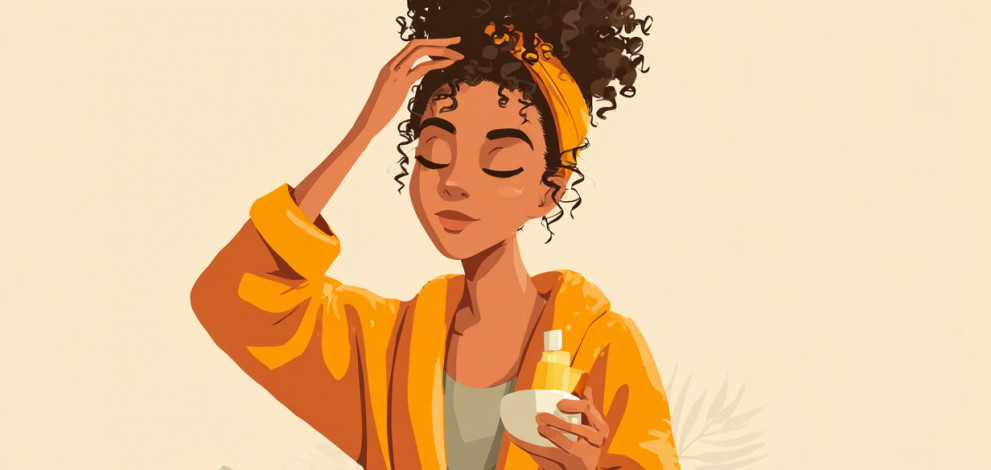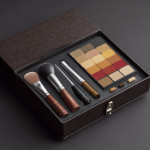Hormones, genetics and natural wear and tear can all drive some noticeable shifts for many women.
Few things reflect our uneasy relationship with ageing quite like the first glint of grey. But hair changes after 40 extend beyond silver strands—they’re part of a broader shift in texture, volume and growth. As you move through your 40s and edge closer to the hormonal fluctuations of menopause, your hair may begin to behave differently. Subtle at first, then more noticeable, these shifts mark a new chapter in how your hair responds to the world around you.
If you’re thinking, isn’t 40 a little early in life to be talking menopause?, you should know: While menopause—technically defined as the point in time marking 12 consecutive months since your last period—happens between ages 45 and 55 on average, it’s the transitional period leading up to it, or perimenopause, that brings hormonal fluctuations and often a wild ride of symptoms. There are the ones you likely know, like hot flashes and mood swings, but also some lesser-discussed signs like brain fog, joint pain, and yes, hair changes, like thinning and loss, for starters. Perimenopause typically spans about four years before menopause hits but can stretch as long as a decade or more, so many women could start to notice these changes in their, yep, 40s, Jessica Shepherd, MD, a board-certified ob-gyn and chief medical officer at telehealth platform Hers, tells SELF.
And menopause itself isn’t the only culprit behind hair shifts as you get older. Other factors linked with ageing can affect your strands’ density and texture during this phase of life, Dr Shepherd says: “It’s rarely just one thing.” Read on to learn all the major ways hair changes after 40 and what’s at the, well, root of these alterations, plus how to care for fickle strands in your fourth decade and beyond.
1. It could become sparser, especially around your part
As noted, the hormonal milieu of perimenopause can prompt some hair loss, and that’s primarily due to the downward trajectory of estrogen, a hormone that happens to play a key role in hair growth. That drop alters your overall balance between estrogen and testosterone, so you have relatively more of the latter, Carolyn Goh, MD, a board-certified dermatologist at UCLA Health who specialises in hair loss and scalp disorders, tells SELF. When the scale tips in favor of testosterone, “the growth phase of the hair cycle shortens,” Dr Goh explains. The result? Your follicles spend less time pumping out fresh strands and more time in the resting and shedding stages of their lifecycle.
Just how much you experience this effect, however, “is really genetically mediated,” Dr Goh says. Some folks have inherited genes (from one or both parents) that make their hair follicles extra sensitive to testosterone; this ups their susceptibility to the above changes in hair lifecycle as they age, which typically leaves them with a type of hair loss called androgenetic alopecia. Also known as female pattern hair loss in people assigned female at birth, it’s marked specifically by shedding at the crown of your head or a widening of your center part that progresses to more diffuse thinning. “If you had fine, thin hair to begin with, the [increasing] sparseness may be more noticeable,” Dendy Engelman, MD, a board-certified dermatologist at Manhattan Dermatology & Cosmetic Surgery, tells SELF.
To be clear, that doesn’t mean any evidence of hair loss is a sign of progressive hormonal changes. “Losing 50 to 100 strands a day is considered normal,” Dr Engelman points out, “which resembles a pad of steel wool covering the drain or just a tangle of thread, depending on the density of your hair.” But if you find that you’re able to see increasingly more of your scalp, “there’s a good chance that’s due to hormones and ageing,” she says.
2. It generally gets finer
Just like with loss, thinning can happen as you head into your 40s because of the associated dip in estrogen. Relatively more testosterone floating around in your system can cause your hair follicles to shrink over time, Dr Engelman says. Tinier follicles, in turn, sprout finer hairs. But the same genetic predisposition noted above is really what determines how much thinning you’ll see and how rapidly, Dr Goh notes. So if you inherited androgen-sensitive hair follicles, you’re more likely to wind up with both female pattern hair loss and overall finer strands as you surpass 40.
3. It may become drier and more brittle in texture
Natural hormonal factors aren’t the only thing that can prompt noticeable hair shifts at this stage of life; there are also “all the things we do to it,” like applying heat, using chemical products on it, and coloring it, Dr Shepherd points out, which can change your strands’ overall feel and strength. TBH, harsh styling habits can make hair brittle, frayed and more prone to breakage at any age, but over the course of years, the hair’s ability to withstand everything we put it through does take a hit, she says. The impact of other everyday factors like exposure to sunlight and environmental pollutants can also build with time, contributing to dryness, Kristin Lo Sicco, MD, a board-certified dermatologist at NYU Langone who specialises in scalp and hair disorders, tells SELF.
At the same time, your skin may produce or retain less natural oil as you age—due to the same estrogen dip noted above—which can lead to a Sahara-like scalp as well as parched strands, Dr Goh points out. (It’s the same reason you might find yourself reaching for a thicker, more hydrating moisturiser as you hit your 40s and beyond.)
Folks with curly hair might be especially vulnerable to these texture changes, as well as the damage and loss that can follow, because this hair type tends to be more fragile, Dr Goh notes. “You might not even be doing much chemical processing or intense styling, but with normal exposures and weathering, it can experience breakage at this age.”
4. It could lose some of its previous lustre
A shift in the appearance of your hair can go hand-in-hand with the texture changes mentioned above. Less overall moisture coating your skin and scalp also means less of it can travel down each hair shaft and give each piece its shine, Dr Goh says. And years of exposure to heat, chemicals, and environmental muck can also strip away some of your hair’s natural gloss, leaving it looking duller, Dr Lo Sicco notes. It could be the first difference you notice or one that comes alongside brittleness and breakage.
5. And yes, it could sport some (more) greys
You know by now that grey strands can make themselves known before age 40, but after this point, you’re especially likely to notice them. We start to lose the pigment-producing cells in our hair follicles, called melanocytes, as we age, and the ones we have left stop making as much melanin (the tint that colors hair). The reason why isn’t clear, but we do know there’s a genetic component, Dr Shepherd says. So there’s a good chance you’ll go grey around the same age and to a similar extent as your elders. And your ethnicity could influence when that happens for your family: Research suggests white people tend to see grey in their mid-30s, followed by Asian folks in their late-30s, and Black people in their mid-40s (though when it comes to other populations, data is lacking).
That said, there’s also evidence that stress can play a role in going grey, Dr Goh says. “For a long time, researchers thought that presidents went grey because they were just of the age when that happens and not because they were especially stressed out—but recently, we’ve seen data showing that if you stress mice, for example, they go grey faster.” (Researchers suspect that the nervous-system activation of constant stress could knock out the cells that produce melanocytes.) So it’s possible that the pile-on of stressors common for folks in their 40s—maybe you’re hitting the peak of your career while also taking care of kids and ageing parents—can spur on the greying process. Dr Goh emphasises, however, that it isn’t about how you handle stress. “You could be the most balanced person in the world, but there are a lot of unavoidable stressors, and your body can still react,” she says.
How to care for your hair in your 40s and beyond
To support your strands for the long haul, it’s helpful to tweak your hair routine with the above changes in mind—starting with how you clean it.
While the question of how often to wash your hair is an über-personal one (dependent on things like your particular hair texture and type, as well as your lifestyle), generally it’s a good idea to cleanse less often if it’s feeling drier, Dr Goh notes. Go for a gentle, hydrating shampoo free of sulfates to clear away debris without stripping already-fragile strands. One addendum: If your hair still gets oily on occasion and you deal with dandruff—which is often caused by a type of yeast that thrives on scalp oils—Dr Goh suggests using a dandruff shampoo every second or third wash. The antifungal agent in these products can zap extra oil and disappear flakes, but by using one in alternation with a hydrating shampoo, you can ensure your hair doesn’t get stripped of moisture in the process, she explains.
The conditioner you use after washing is just as important, if not more so, to maintaining hair that’s dry or thinning, Dr Shepherd says. She recommends looking for a deep conditioner containing keratin to strengthen flimsy strands and stave off brittleness. As SELF has previously reported, ingredients like amino acids (such as glycine, arginine, and cysteine) and plant proteins (for instance, hydrolysed wheat or rice protein, or soy protein) can also fortify thinning hair.
Doing less when it comes to hair styling—cutting down on your use of hot tools, chemical treatments, and dyes, if you can—can also spare your strands some wear and tear. (And if you do choose to blow-dry, straighten, or curl your hair, don’t forget the heat protectant.)
Beyond shifting your hair-care practices, it’s important to stay up-to-date with your annual physicals as you age, Dr Lo Sicco notes. Some of the above changes to hair texture and density can also stem from health issues—certain conditions like hyper- and hypothyroidism and diabetes can cause shedding or thinning, as can deficiencies in nutrients including iron, biotin, vitamin D and zinc. Your primary care doc can detect whether any of these issues might be lurking beneath the surface, and if so, get you on a treatment plan to squash hair-related changes and any other symptoms you might have.
If you’re concerned about thinning, loss, or other hair changes after 40, it’s also wise to see a board-certified dermatologist, who can figure out the root cause in your case. The good news is, even with ageing-related hair loss, there are treatments that can help, namely medications like minoxidil and spironolactone (a blood-pressure drug that can stymy the effects of testosterone). Some derms may even offer an in-office procedure that involves extracting the plasma from your blood and injecting it into your scalp to reinvigorate your follicles.
While it’s often not possible to outright prevent hair loss with age, the sooner you embrace treatment, the more effectively it can work—so you shouldn’t be afraid to tap an expert from the jump, Dr Shepherd says. But at the same time, remember that all the potential hair changes above reflect totally natural and normal parts of ageing. And there’s actually no rule that you have to do anything about ‘em.


